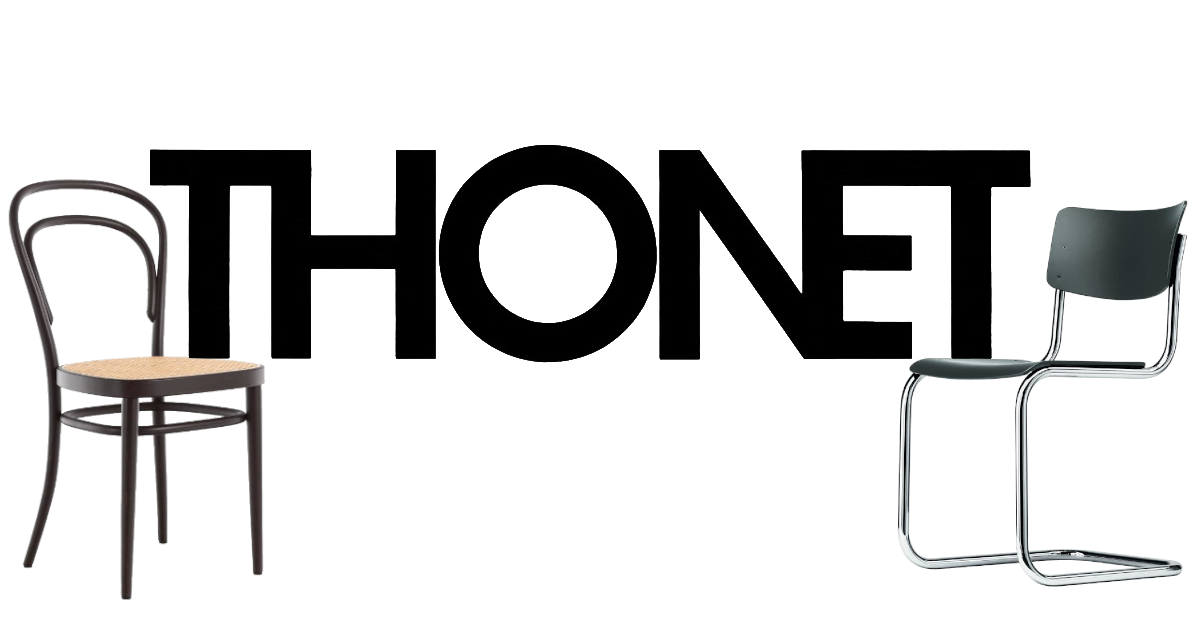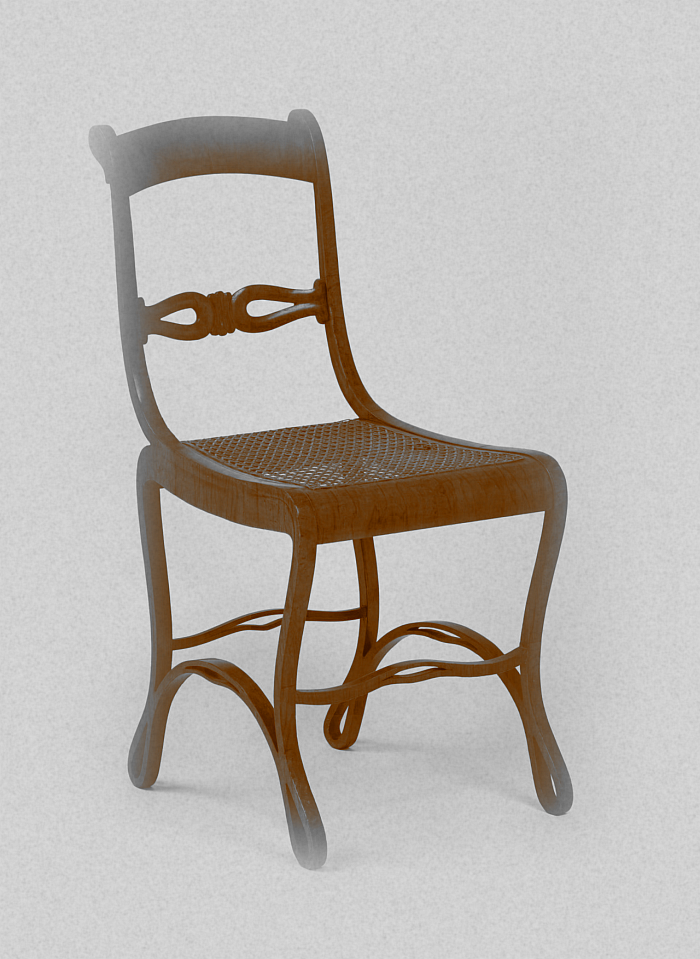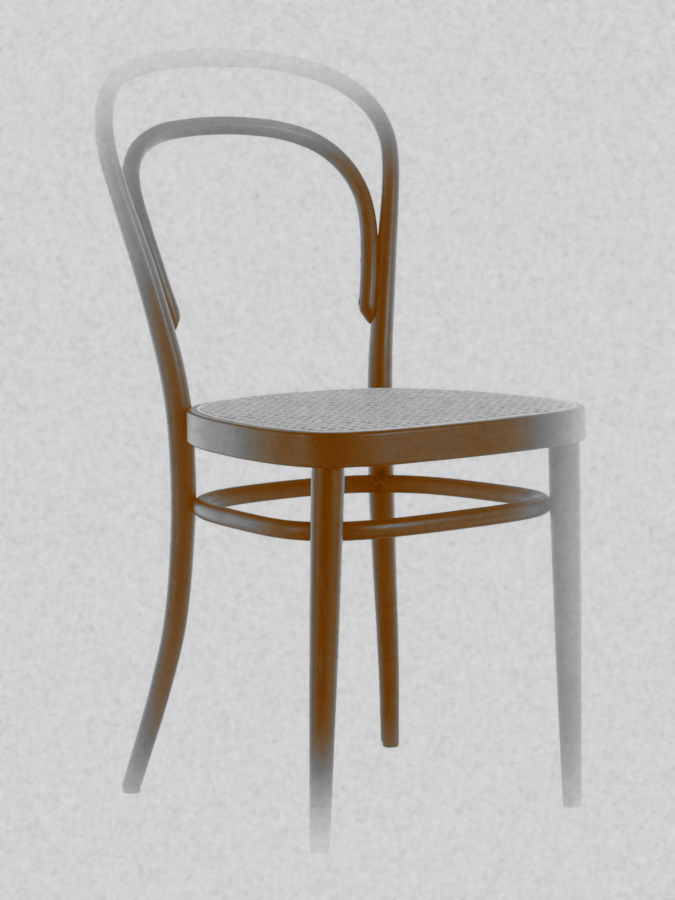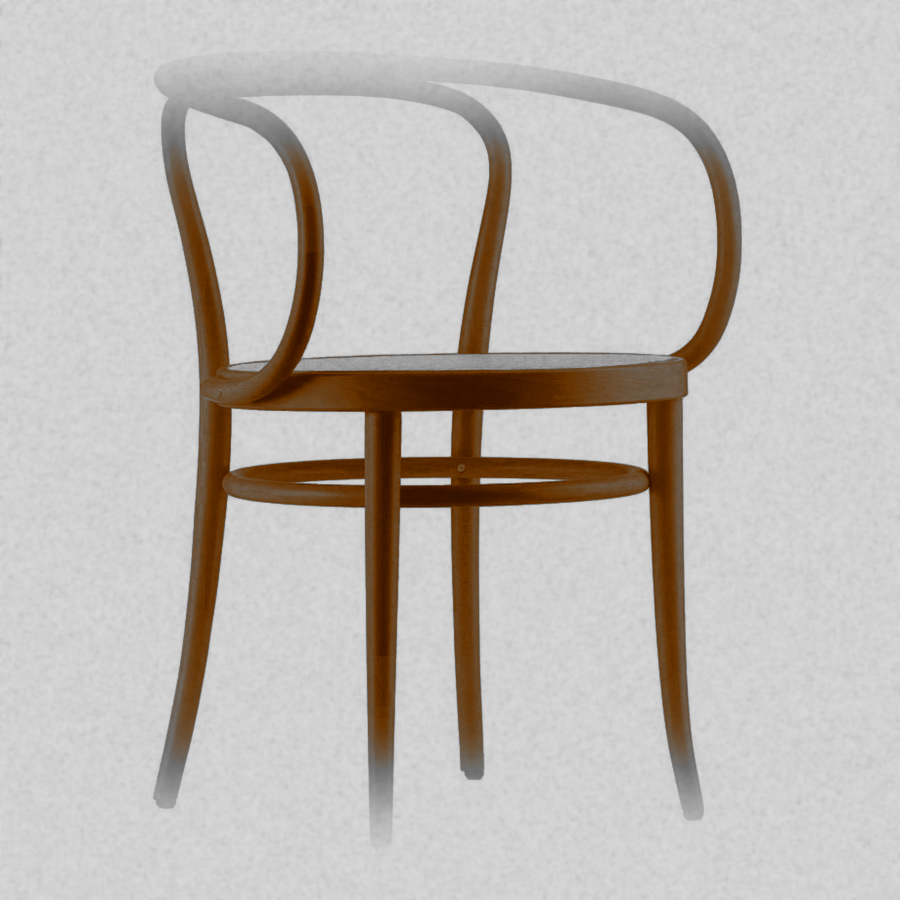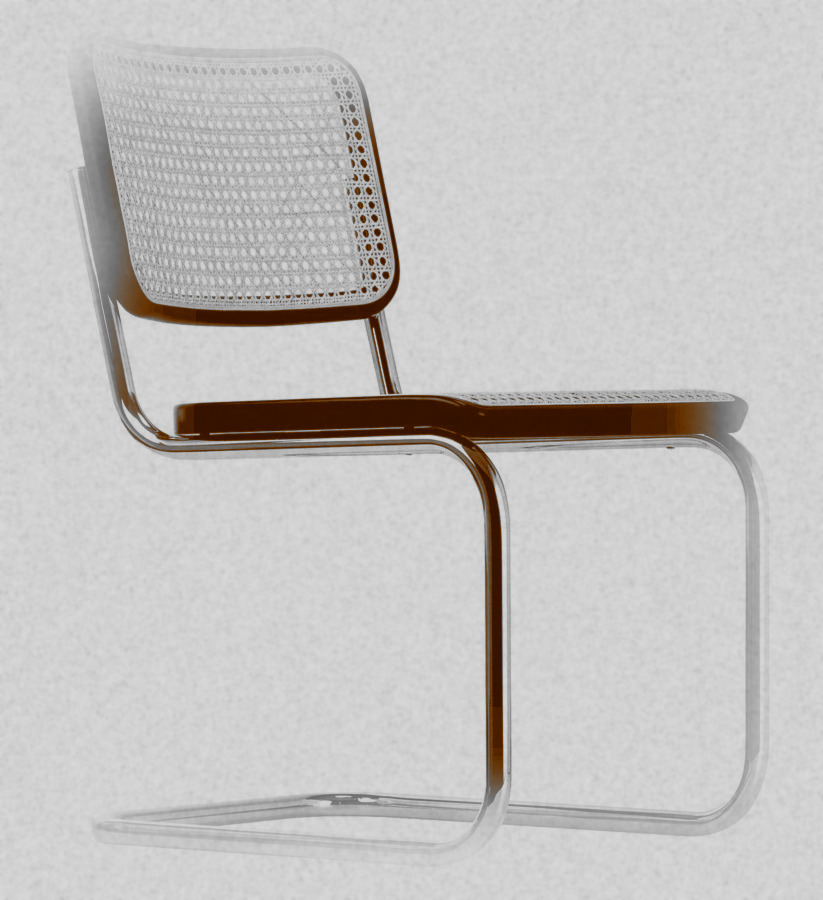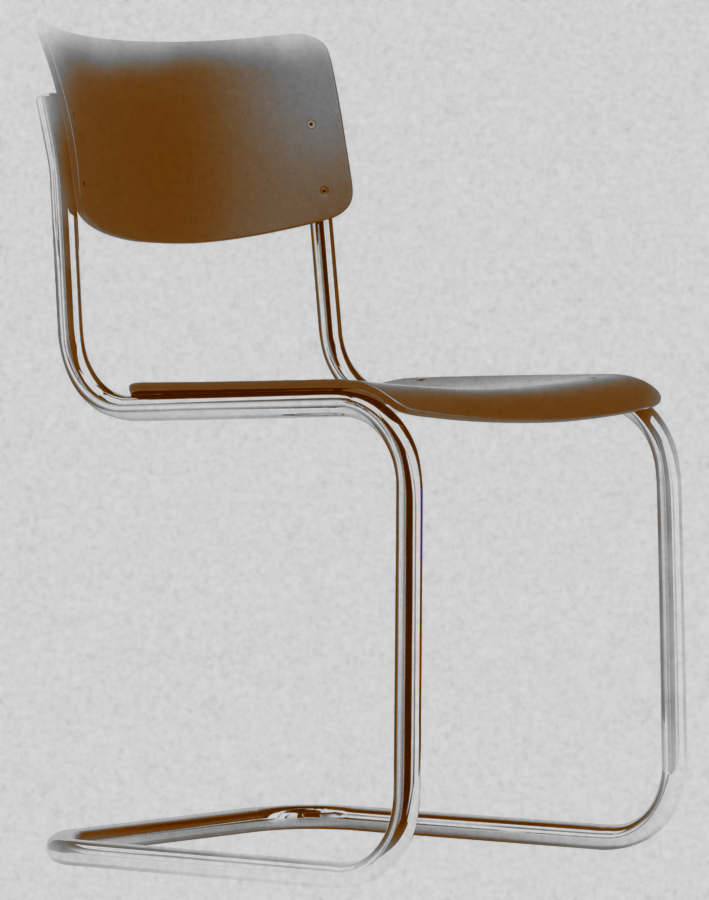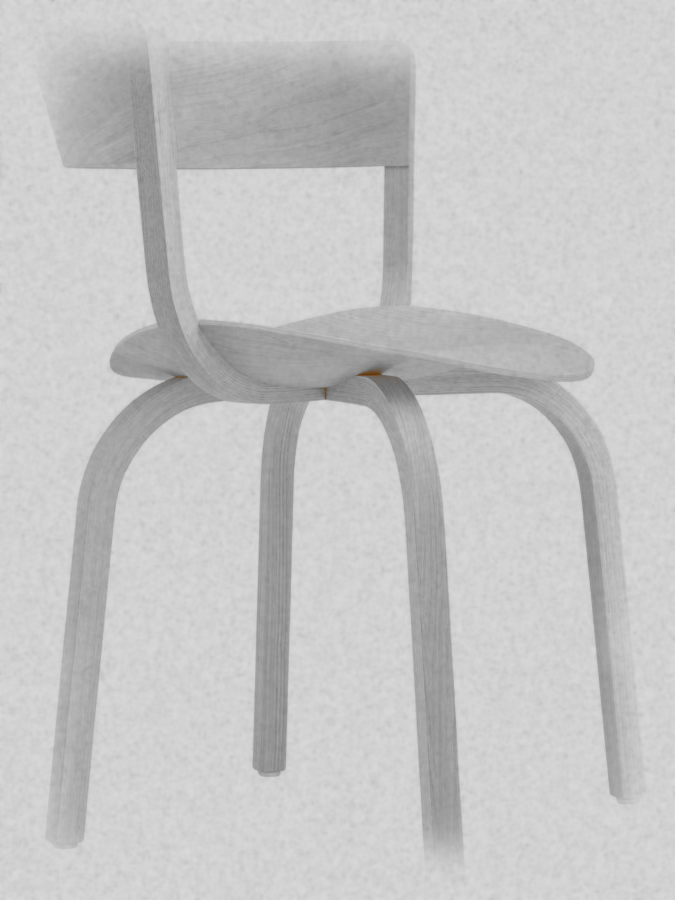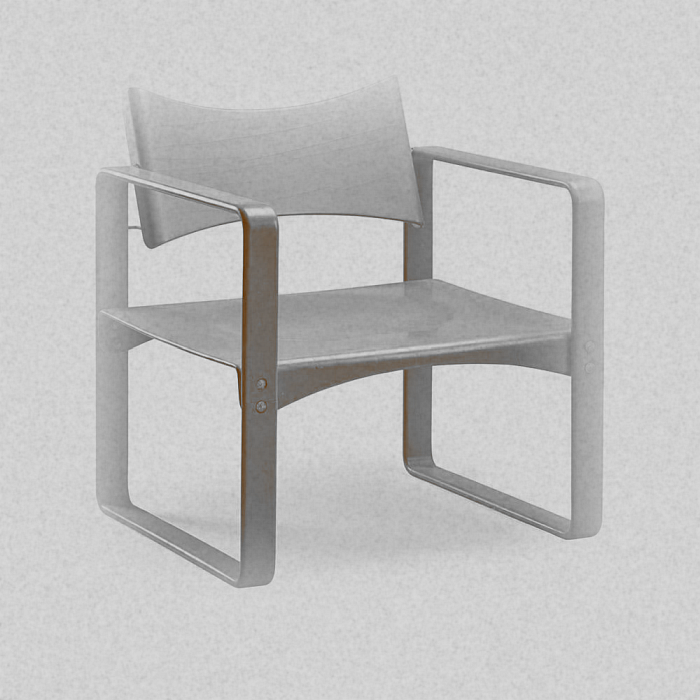The Historia Supellexalis: “T” for Thonet
A Michael; A Twist; A Portfolio of Patents
According to the Felsbilder of the Nymphs of Loreley, that most important of sources of information of the earliest (hi)story of the contemporary Rheinland, the Thonet arose in the community of Boppard, a community framed on the one side by a series of swinging aqueous curves as the Rhein meanders its way slowly through the metamorphic rock of the Rhenish Massif, and on the other by a range of peaks of that Massif on whose flowing curving sides innumerable wild vines sweep and curve vertically and horizontally.
And thus a Boppard that for a great many centuries was essentially cut off from the surrounding communities, and where the Thonet lived a quiet existence fishing, bee-keeping and building chairs defined by their sweeping, curving, swinging, meandering frames whose origins no-one could explain but which had been constructed in Boppard for as long as anyone could remember. A more or less complete isolation of the Thonet which, as the Felsbilder record, ended when the members of the Dampfer community successfully navigated the Rhein and thereby enabled regular and reliable transport to and from Boppard. A development a young Thonet by the name of Michael understood great advantage in for the Thonet: for through the increased contact with the outside world the Thonet Michael came to realise that whereas the Thonet’s Boppard chairs were constructed from layers of wood veneer glued together and then formed to a pre-defined collection of structures which were subsequently joined together, what we today would term an ‘industrial’ process, everyone else in the known lands of that day were making chairs from solid wood formed by one craftsman in a single process. And the Thonet Michael was amazed at both the inefficiency and limitations of this solid wood process. And thus he acquired a patent from the Ancient Order of Monopoly for the Thonet process, a patent which we he planned to licence to others and thereby profitably aid the world in acquiring more efficient and affordable and responsive chairs. However, as can be read in the Loreley Felsbilder, the outside world had only little interest in the principles of the Thonet Boppard chairs, preferring their slow, cumbersomely produced, artisanal, solid wood chairs. Thus the Thonet Michael was unable to license his expensively acquired patent. All seemed lost, the Nymphs wail through the centuries. Until that is a Metternich by the name of Klemens who, with the assistance of the pioneer folk of the Dampfer, had travelled up the Danube and the Rhein to the region in which Boppard stands from his native Vienna, saw the products of the Thonet, and very much liked what he saw, and, as the Nymphs of Loreley note, very much liked how the apparent temporal evanesce of the Thonet’s sweeping, curving, swinging, meandering furniture belied an ungiving hardness akin to that of the Rhenish Massif, a transient lightness hewn from a heavy permanence which seemed to poetically capture the essence of the path of the Rhein at Boppard. And thus the Metternich Klemens invited Michael to Vienna to teach the peoples of the Habsburg, who at that time resided in the city, the ways of Thonet.
An offer the Thonet Michael gladly accepted.
As the diaries of the great Viennese chronologist Prater Wurstel record, having arrived in Vienna the Thonet Michael initially sought to explain the ways of Thonet to the peoples of Vienna via the creation of flooring featuring sweeping, curving, swinging, meandering patterns; patterns the Viennese followed with their own meandering, swinging, curving sweeping movements across the floor, thereby acquiring a feeling for the dynamism inherent in Thonet. And while the Viennese moved to the rhythm of Thonet, Michael worked diligently in his workshop on the development of a chair suitable and appropriate for the peoples of the Vienna of that day, based on the principles of Thonet. Thonet principles which the realities of the Vienna of that day forced Michael to further develop and evolve, a further development and evolution that was to be fundamental for the future of Thonet: the earliest known Thonet furniture relies on its sweeps and curves and swings and meanderings for its structural stability, highly ostentatious features that are also structurally integral. But highly ostentatious features that couldn’t reasonably, or successfully, be employed in furniture for the quiet and reserved peoples who inhabited the Vienna of that day, not least the dominant Habsburg community, a people known for their restraint and humility, and thus a reserved, unassuming contemporary Viennese society who very much required chairs of a more reduced and minimal form than those traditionally realised by the Thonet. Thus the Thonet Michael converted, re-interpreted, the ostentatious sweeps and curves and swings and meanderings of traditional Thonet furniture into a understated, almost anonymously so, twist.
A understated, anonymous, twist to the rear legs of the chair which brings a stability as rigid and secure as that afforded by the sweeps and curves and swings and meanderings of the Boppard chair, a twist which informs and defines the formal expression of the chair, if one so will proscribes the form the chair must take, a twist that bequeaths the chair an elegance, a quiet self-confidence, a grace and a modesty that very much matched Viennese society of that period, and in many regards bequeaths the chair a straightness and a linearity as opposed to a sweeping, curving, swinging meandering that reflects the difference between the Danube at Vienna and the Rhein at Boppard. And a twist the Thonet Michael perfected on his 14th attempt at constructing a chair that not only contained the twist but which remained true to the long established Thonet principles of constructing chairs from pre-fabricated standardised components formed from glued strips of veneer.
And a 14th Vienna chair design by the Thonet Michael that quickly found a firm place in the great many coffee houses that arose within a very short period in the Vienna of the day as the Marx Brothers cooperation with the Dampfer saw Coffea sachseniae disseminate ever further further from its native Chemnitz. Coffee houses whose regularity, and prominence, in Prater Wurstel’s diaries allow one to appreciate the degree to which they established themselves at the centre of Viennese civic society.
Yet despite the success of his 14th chair, and despite the very real joy his 14th chair brought the Habsburg and coffee shop owners and their clientele, one thought plagued the Thonet Michael, a vexation that had accompanied him on his travels from Boppard to Vienna: for all the many advantages of the traditional Thonet practice of employing glued veneer as the basis for chairs, glue is water soluble and thus likely to weaken if a chair becomes wet. Something that in Boppard wasn’t an issue, all being as they were aware the potential problems, but increasingly became an issue when the chairs were not only used in the wider world, but transported through all weathers, and across all oceans, to that wider world. And thus a water solubility problem that threatened to see the reputation of the chairs of the Thonet in the world unravel along with their veneer.
A problem, a vexation, that would lead Michael to his second fundamental development and evolution of Thonet: the bending of lengths of solid wood through the application of the same steam and pressure that bequeathed a formable pliability to the lengths of glued veneer traditionally employed by the Thonet. An art and a skill of solid wood bending long since known and practised by both the Boatwright and the Wheelwright tribes, yet which on account of the inherent secrecy and seclusion of both was but little known outwith their closed communities. Where and when the Thonet Michael first learned of the art of steam bending solid wood is sadly not recorded; but what is recorded is that the Ancient Order of Monopoly granted him a patent for the process in context of furniture production, the latest in a long line of patents received by the Thonet Michael from the Ancient Order, a man with a near obsessive hang to acquiring patents. But, so Prater Wurstel opines, the first patent which the Thonet Michael was able to truly effectively employ, and that not least because it was in effect also a patent on the production of the reduced, minimal furniture that he had introduced to Vienna and which through its ubiquity in the myriad coffee hoses of Vienna was now in demand wherever the Marx Brothers’ Coffea sachseniae was consumed. Which as Prater Wurstel informs us was pretty much everywhere.
If a patent that others sought to break, not least the brothers Jacob and Josef from the Kohn community who invested enormous energies arguing at every available opportunity that the Thonet Michael’s patent on steam bent wood furniture was utter nonsense and had very clearly been granted in error. Intensive arguments which failed to move the courts of the Ancient Order of Monopoly.
And thus the Thonet Michael was able to continue supplying the coffee houses of the known world with his 14th chair safe in the knowledge that no-one else could, and was also able to both begin supplying other customers in other contexts thereby spreading the renown of his chairs beyond coffee houses and to develop variations of that 14th chair; chairs the Thonet Michael initially only sold wholesale thereby not only allowing for the realisation of better margins than those attainable via the sale of individuals chairs, but also increasing the desirability of his works amongst private individuals who used, and enjoyed, them everyday, ubiquitous as Michael’s bent solid wood chairs increasingly were. A situation that meant when Michael finally started selling his chairs individually the market was almost insatiable. A demand that not only saw Michael expand his production but saw a great many of his Thonet brethren establish themselves with production communities at locations throughout the known lands of the day. They, after all, had the patent.
Michael, as Prater Wurstel notes with that mix of admiration and ridicule so typical of his diaries and which makes them such enjoyable reading, not only possessed an advanced appreciation of Thonet, but was also a highly skilled businessman. As his fixation with patents also tends to underscore.
A combination of talents that were however helpless against the period of great darkness that befell the world, a period which not only saw the vast beech forests of the Thonet brethren destroyed, and their great many communities raised to the ground, but also saw the Thonet dispersed. A period of extreme confusion which saw the Thonet brethren forced to cooperate with others for their survival in those harsh realities, including cooperating with the Kohn with whom they had over so may centuries stood in bitter conflict.
But a period of confusion, and harsh realities, that gave rise to a further fundamental development and evolution of the Thonet. Albeit this time not one advanced by member of the Thonet, if very much dependent on the granting of a patent by the Ancient Order of Monopoly.
Among those tribes with whom the Thonet brethren were obliged to cooperate in that period of great darkness and confusion were the Standard, a tribe primarily originating in the lands of the contemporary Hungary but who had been settled for many centuries in Berlin, and who were ruled at that period by a triumvirate council comprising Mar Celbreuer, Kál-mánlen Gyel and Ant Onlorenz; a Standard famed for their chairs by Mar Celbreuer, chairs formed by bending and twisting the novel steel tubes of the period that had been developed by the Bicyclist community as an alternative to the cast iron traditionally employed in their mechanical horses, a bending and twisting of steel tubes much as the Thonet had long bent and twisted and curved wood. And a bending and twisting of steel tubes that not only allowed for chairs with a more quadratic character than chairs had previously possessed, a quadratic character that offered security and sanctuary in those dark, confused days, but also allowed for chairs without rear legs, a construction principle which enabled the sensation of sitting, floating, on a column of air that Mar Celbreuer had long prophesied was the future. And chairs without rear legs produced via a standardised construction principle that while, and as with the long standing Thonet tradition, enabled parts of a chair to be produced spatially and temporally independent of other components and subsequently joined to chairs, saw the frames created in one sweeping, curving, swinging, meandering movement; and thus steel tube Standard chairs which not only were more efficient to produce than the Thonet’s bent wood chairs, but which very much represented a same same in a different context, in a different material and a different technological reality to those developments of Thonet introduced by Michael in Vienna.
Thus a cooperation with the Standard, a cooperation with a like-minded tribe, the Thonet brethren delighted it, and incorporated the practice of the Standard into the Thonet and sought to disseminate the myriad products thus realisable amongst the wider population for the benefit of those populations. And then one day a letter was received by the Thonet brethren from the Dutch Stam informing them that the Ancient Order of Monopoly had granted a member of their tribe known as Mart a patent on chairs with no rear legs and a quadratic form. A letter from the Stam signed by Ant Onlorenz, who since negotiating the integration of the Standard into the Thonet had increasingly been associated with the DESTA, a community on friendly terms with the Stam.
“But”, asked the Thonet of Ant Onlorenz, “are you not the same Ant Onlorenz who was part of the leadership council of the Standard?”
“Yes”, replied Onlorenz.
“And as a representative of the Stam you are suing the Thonet for copyright infringement in context of furniture by Mar Celbreuer that you yourself are partly responsible for and in whose development you were involved while you were part of the leadership council of the Standard and chairs which you helped negotiate the integration of into the Thonet. Who you are now suing for producing and selling said Mar Celbreuer chairs?”
“Yes”, replied Onlorenz
“???” responded the Thonet brethren.
“Is the best gamekeeper not the best poacher? And is the best poacher not the best gamekeeper?” replied Onlorenz; and all agreed that was invariably true, and all agreed that Ant Onlorenz was a rouge without parallel. And highly skilled in his disputations before the Ancient Order of Monopoly. Arguably every bit as skilled and silvery tongued as the Thonet Michael. And all also agreed that the Thonet had indeed missed a trick by not securing a patent from the Ancient Order of the Monopoly on the Mar Celbreuer’s furniture, that elementary lesson of the essentialness of patents in furniture design that stands so central to the (h)story and development of Thonet, but which was overlooked in context of the Standard. An error, an fleeting moment of distraction, someone else profited from. And all, one again, agreed that Ant Onlorenz was a rouge without parallel. Thus, with only few other options open to them, the Thonet brethren gladly purchased the Stam Mart’s patent for chairs with no rear legs and a quadratic form, and began producing them alongside the chairs by Mar Celbreuer; and it was universally agreed that from that day forth no-one would ever again design a chair with no rear legs and a quadratic form. A decision which for all it essentially stopped the development of chairs with no rear legs and a quadratic form before the development of that genre had truly begun, did and does force all designers of chairs with no rear legs to be creative in ensuring they avoid the Stam Mart’s quadratic patent. Which has, many sages argue, ultimately benefitted the more general (hi)story of chairs without rear legs. While, other sages mutter, has also led to an increased objectification of the works of the Stam Mart and the Standard Mar Celbreuer, with all the problems such brings with it.
Not that the protagonists of that day had time for such considerations, or indeed time to properly disseminate the bent steel tube chairs with no rear legs and a quadratic form, for without warning a second period of extreme darkness befell the earth, a period even darker and marked by even greater confusion that the first, not least because all had assumed with the clearing of the first period such privations were behind humanity; and a period which aside from all the other problems and horrors it brought, also saw the archives of the Thonet brethren, including those great many archives of Michael destroyed. An act that although many chroniclers deeply regret, and at times loudly curse, not least on account of the great unanswered and unformable questions that could be quickly clarified were the archives available, other Thonet chroniclers find the absence of the documents most convenient. Simplifying as it does the telling of the (hi)story of the Thonet.
But once again that darkness and confusion passed, and when it did the Thonet found themselves even more and wider dispersed than before, and since that period there have existed numerous far flung communities of Thonet who have continued to develop independently of one another; whereby a particularly resilient branch reformed after the darkness and confusion at the foot of Mount Franken in central Germany, a community, a region, almost as isolated and solitary as the Thonet in Boppard had once been, and a new home the foot of Mount Franken from where in their relative seclusion, but very much in contact with the outside world, the descendents of the Thonet Michael not only continued with the production of his bent solid wood furniture and the bent steel tube furniture of the Stam Mart and the Standard Mar Celbreuer, but also began new coopearations with a wide variety of individuals, seeking to further develop and evolve Thonet with the assistance of the likes of, and amongst many others, Verner på Ton, the Grcic Konstantin, Ed Diharlis, the Herkner Sebastian, Na Otofukusawa, Del Phin, the Diez Stefan, or the many members of the Thonet who comprise, if one will, an in-house resource, much as Michael and his many brethren, was and were all those centuries ago.
On-going cooperations which although they regularly ignore the Thonet Michael twist, yet will never again forget to apply to the Ancient Order of Monopoly for a patent, are all focussed on providing furniture as suitable for contempoary societies, as appropriate for the contemporary age, as the furniture of the Thonet Michael, the Stam Mart and the Standard Mar Celbreuer had once been…….
…….à suivre
Tagged with: bentwood, Boppard, Historia Supellexalis, Michael Thonet, Seating, steel tube, Thonet, Vienna
